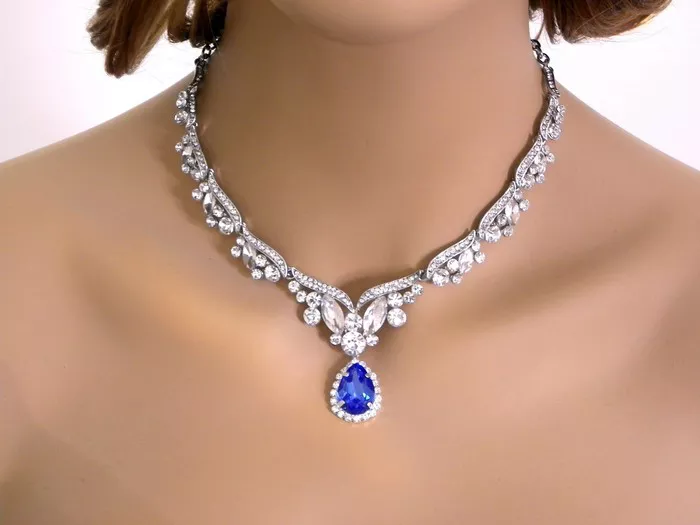The diamond necklace is a symbol of luxury, elegance, and timeless beauty, adorning the necks of royalty, celebrities, and fashion enthusiasts for centuries. This comprehensive article delves into the rich history of the diamond necklace, exploring its origins, evolution through different eras, cultural significance, notable designs, and enduring allure as a coveted piece of jewelry.
Origins of the Diamond Necklace
The concept of wearing precious gemstones, including diamonds, around the neck dates back to ancient civilizations. However, the evolution of the diamond necklace as a distinct jewelry piece can be traced through various historical periods:
Ancient Times
Egyptian Influence: In ancient Egypt, jewelry was not only a symbol of wealth but also had religious and ceremonial significance. Necklaces adorned with precious stones, including diamonds, were worn by pharaohs and nobles as symbols of power and divine protection.
Middle Ages
Medieval Europe: During the Middle Ages, diamond necklaces were primarily worn by royalty and aristocracy. These necklaces often featured large diamonds set in intricate gold or silver designs, symbolizing wealth and status.
Renaissance and Baroque Eras
Renaissance Splendor: The Renaissance saw a resurgence of interest in classical art and culture, influencing jewelry designs. Diamond necklaces became more elaborate, incorporating intricate craftsmanship and incorporating diamonds in combination with other gemstones.
18th and 19th Centuries
Royal Patronage: The 18th and 19th centuries marked a period of opulence and extravagance among European royalty. Diamond necklaces were commissioned as part of elaborate parures (matching sets of jewelry) worn at court events and royal ceremonies.
Technological Advancements and Design Innovations
The invention and refinement of jewelry-making techniques played a significant role in the evolution of diamond necklaces:
Diamond Cutting: The development of diamond cutting techniques, such as the rose cut and old mine cut, enhanced the brilliance and sparkle of diamonds, making them more desirable for use in necklaces.
Metalwork: Advances in metalwork allowed for more intricate and delicate designs, such as filigree and granulation, which complemented the beauty of diamonds in necklace settings.
Cultural Significance of Diamond Necklaces
Diamond necklaces have held cultural significance across different societies and time periods:
Symbol of Status: In many cultures, diamond necklaces have been symbols of wealth, status, and power, worn by rulers, nobility, and the elite.
Romantic Symbol: Diamonds have long been associated with love and romance, making diamond necklaces popular gifts for special occasions such as weddings and anniversaries.
Artistic Expression: Jewelry designers and artisans have used diamond necklaces as a canvas for artistic expression, creating pieces that reflect trends, styles, and cultural influences of their time.
See Also: 10 Best Men’s Gold Cross Necklaces in 2024
Famous Diamond Necklaces Through History
Several diamond necklaces have gained fame for their exquisite beauty, historical significance, and association with notable figures:
1. The Hope Diamond Necklace
Legendary Blue Diamond: The Hope Diamond, a 45.52-carat deep blue diamond, has been part of several elaborate necklace settings throughout its history, captivating imaginations with its mysterious allure.
2. Queen Mary’s Diamond Rivière
Royal Splendor: Queen Mary of England owned a magnificent diamond rivière necklace, featuring a single row of large diamonds set in platinum, showcasing the elegance and grandeur of the British monarchy.
3. Elizabeth Taylor’s La Peregrina Necklace
Iconic Pearl and Diamond Necklace: Acquired by Elizabeth Taylor, La Peregrina was a historic pearl with a diamond necklace designed by Cartier, combining diamonds with a large, pear-shaped pearl of exceptional quality.
Modern Trends and Contemporary Designs
In the 20th and 21st centuries, diamond necklaces have continued to evolve with changing fashion trends and design innovations:
Red Carpet Glamour: Diamond necklaces are frequently showcased on red carpets, worn by celebrities to complement designer gowns and make a statement of luxury and style.
Versatility and Accessibility: Modern diamond necklaces come in a variety of styles, from classic solitaire pendants to elaborate multi-strand designs, catering to different tastes and occasions.
Customization and Personalization: Jewelry designers offer custom-made diamond necklaces, allowing clients to create bespoke pieces that reflect their individual style preferences and personality.
Caring for Diamond Necklaces
Proper care and maintenance are essential to preserve the beauty and value of diamond necklaces:
Regular Cleaning: Clean diamond necklaces gently with a soft brush and mild soapy water to remove dirt and oils that can dull their sparkle.
Safe Storage: Store diamond necklaces individually in soft pouches or jewelry boxes to prevent scratching and tangling with other jewelry pieces.
Professional Inspection: Periodically have diamond necklaces inspected by a jeweler to check for loose settings or damage that may require repair.
Conclusion
The diamond necklace has a storied history spanning centuries, evolving from ancient symbols of power and prestige to modern expressions of luxury and romance. With their timeless appeal and enduring allure, diamond necklaces continue to captivate and inspire, representing not only exquisite craftsmanship and design but also the cultural values and aspirations of the wearers. Whether worn as a symbol of status, a declaration of love, or a fashion statement, diamond necklaces hold a special place in the world of jewelry, embodying the beauty and brilliance of these precious gemstones across generations.

